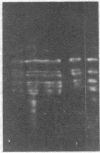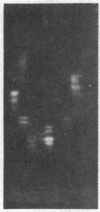Abstract
A single antibody-forming cell clone has been selected from primed mice by sequential transfer of limited numbers of spleen cells into irradiated syngeneic mice. The original spleen cell donors had been immunized with dinitrophenylated bovine gamma globulin. Specific antibody molecules in sera of recipient mice were separated by isoelectric focusing on polyacrylamide gels and visualized by 131I-hapten binding and autoradiography. This method provided a marker for antibody-forming cells derived from a single cell clone. This report describes the history of one clone of cells (E9) producing IgG antibody to dinitrophenyl. Clone E9 is long-lived and has been maintained for five transplant generations (over 6 months) by serial transfer of spleen cells into irradiated syngeneic mice. Clone E9 has the following properties: (1) Antibody production strictly depends on antigen, presented either in vivo or in vitro; (2) Induction of E9 anti-dinitrophenyl shows specificity for the carrier protein; (3) Antibody is produced in amounts (2-3 mg/ml serum) comparable with myeloma-protein production by murine plasmacytomas; (4) In the absence of antigen, memory cells have a lifetime exceeding 28 days.
Full text
PDF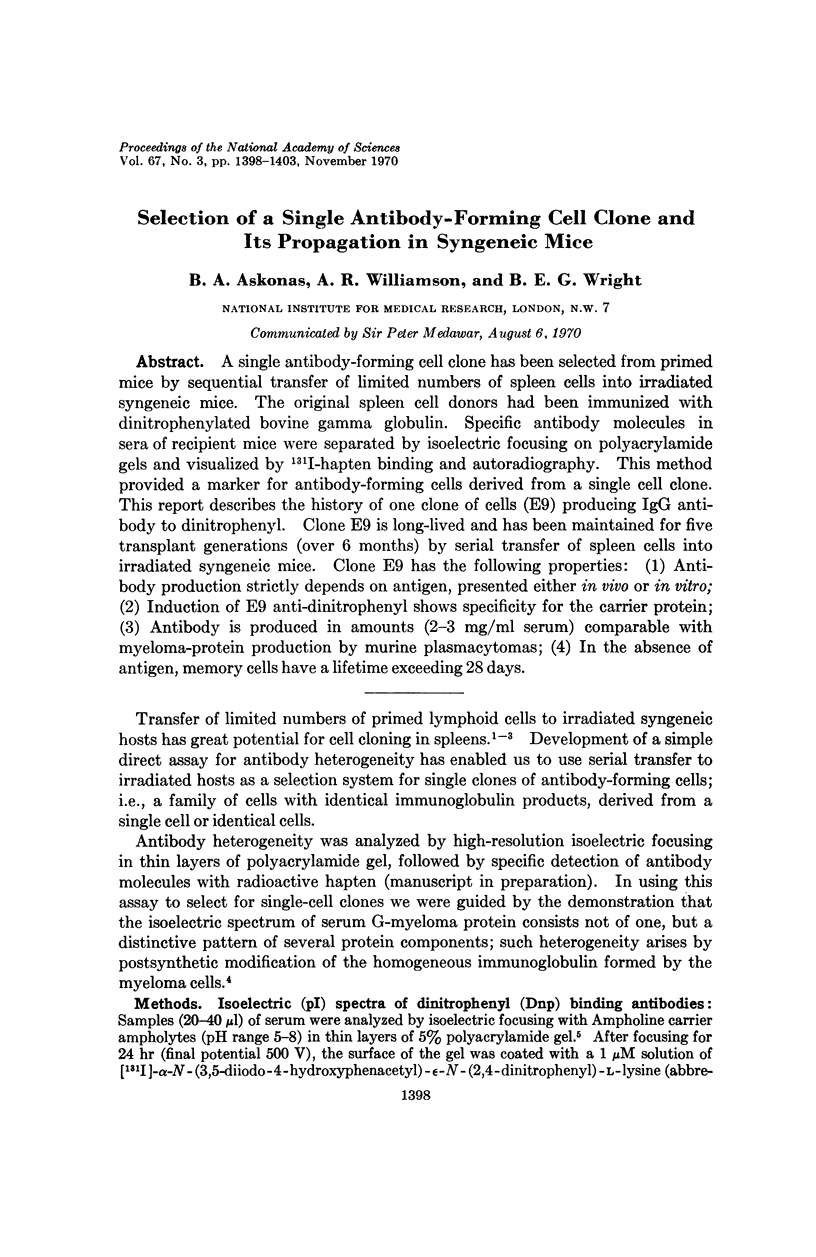
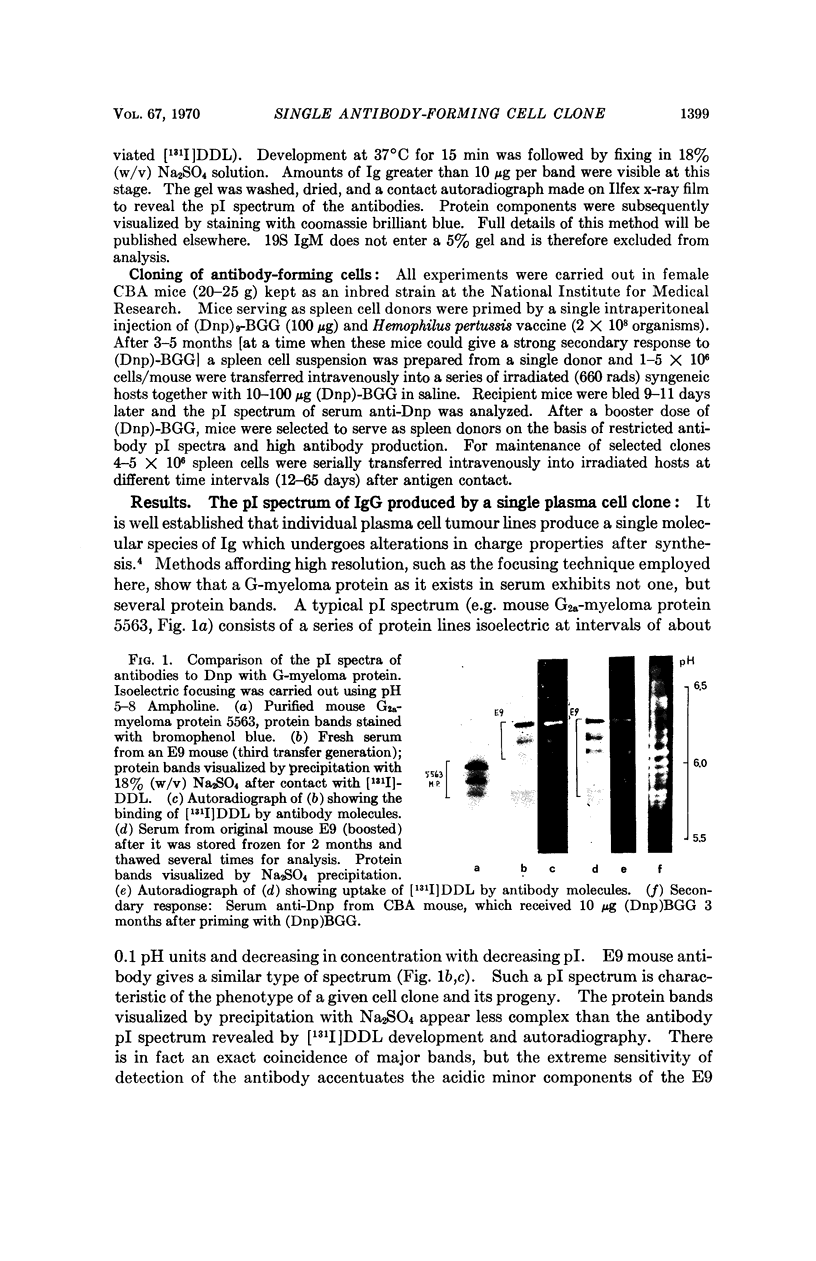
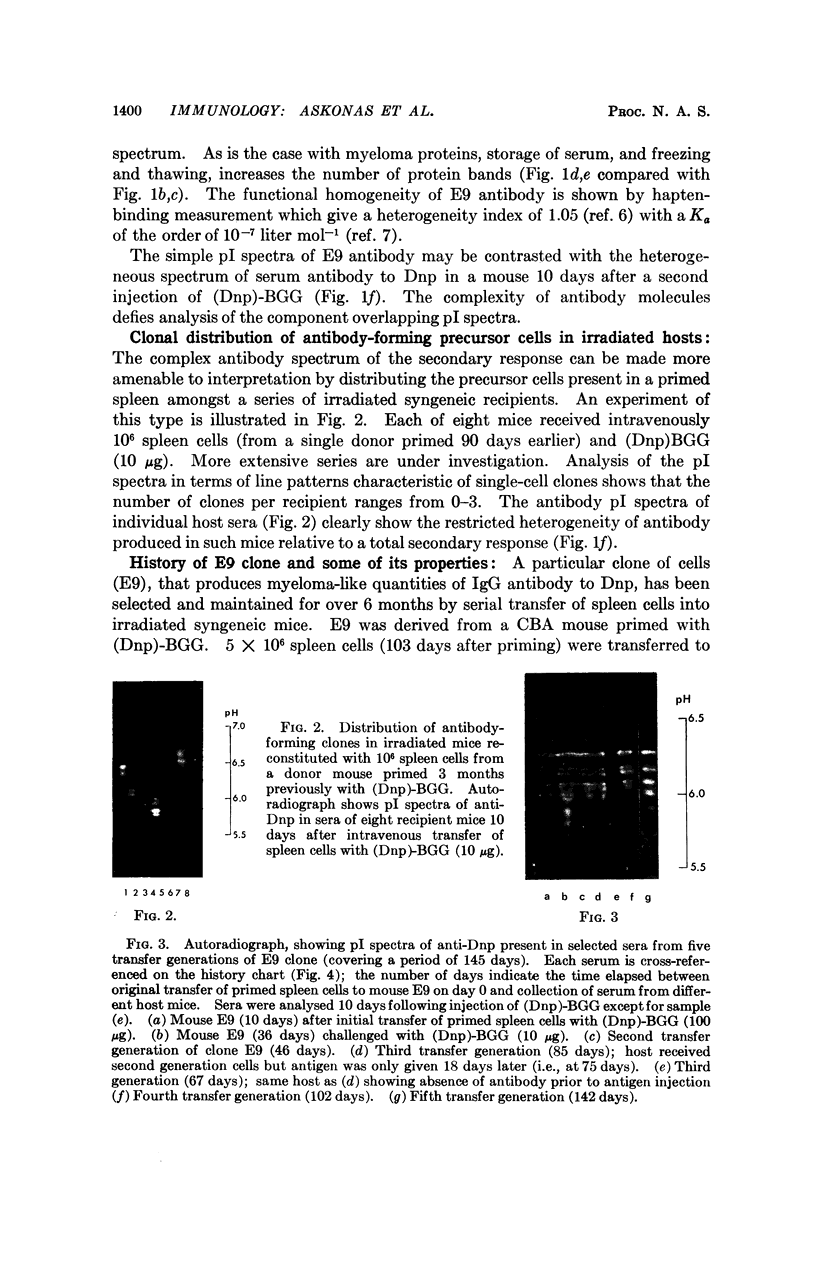
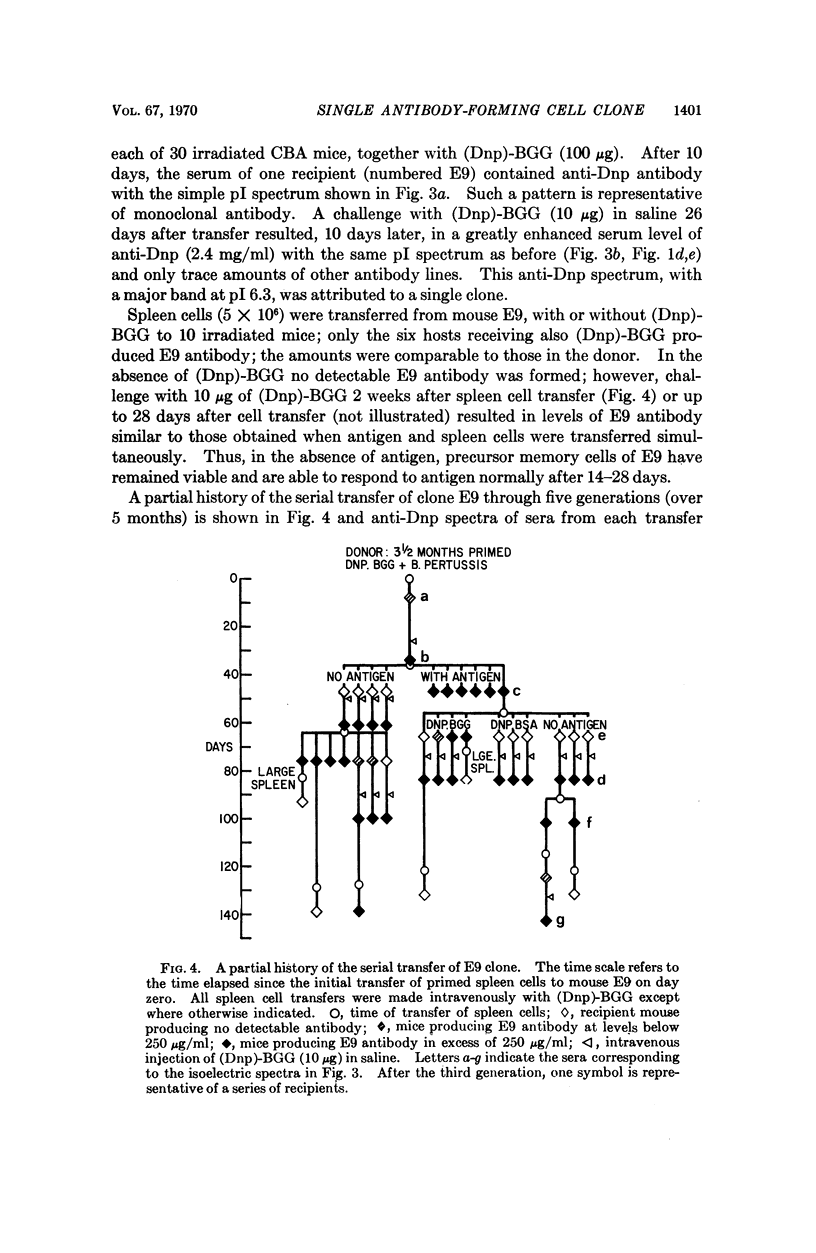
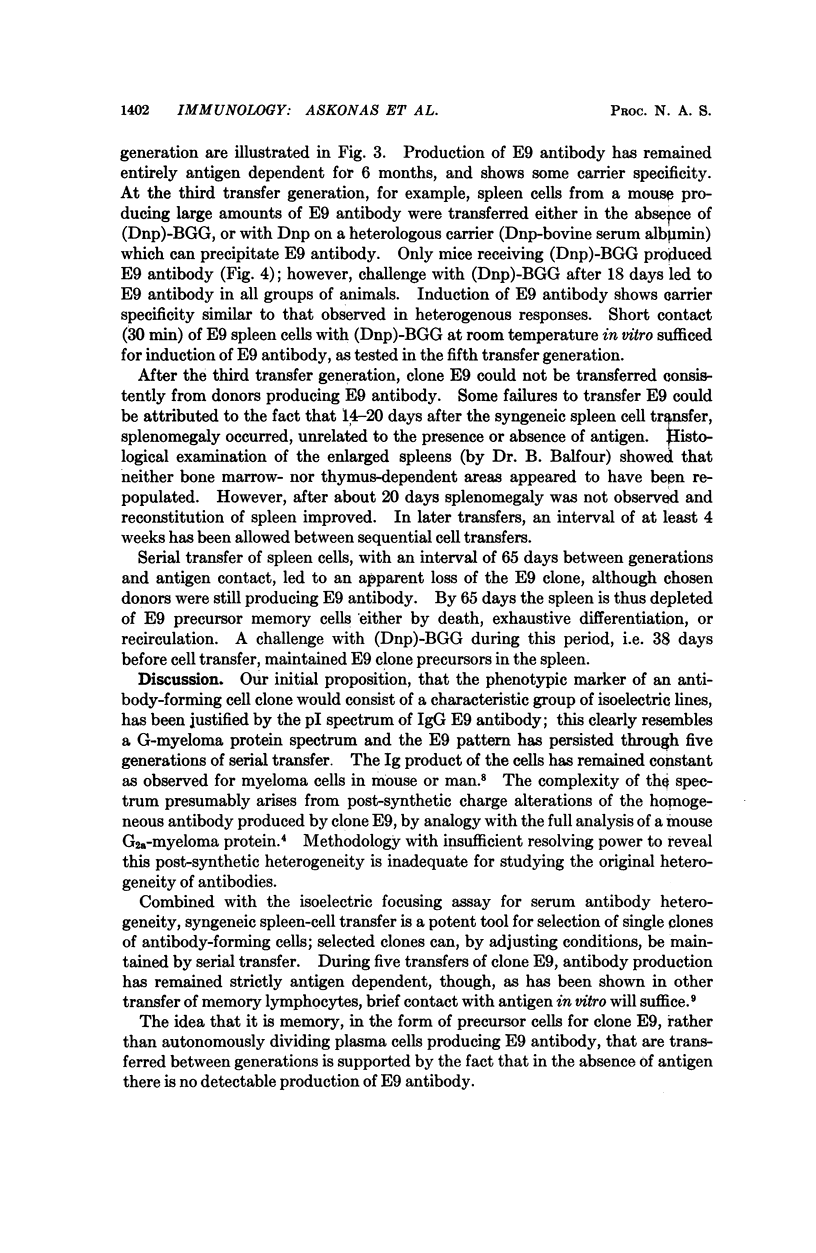
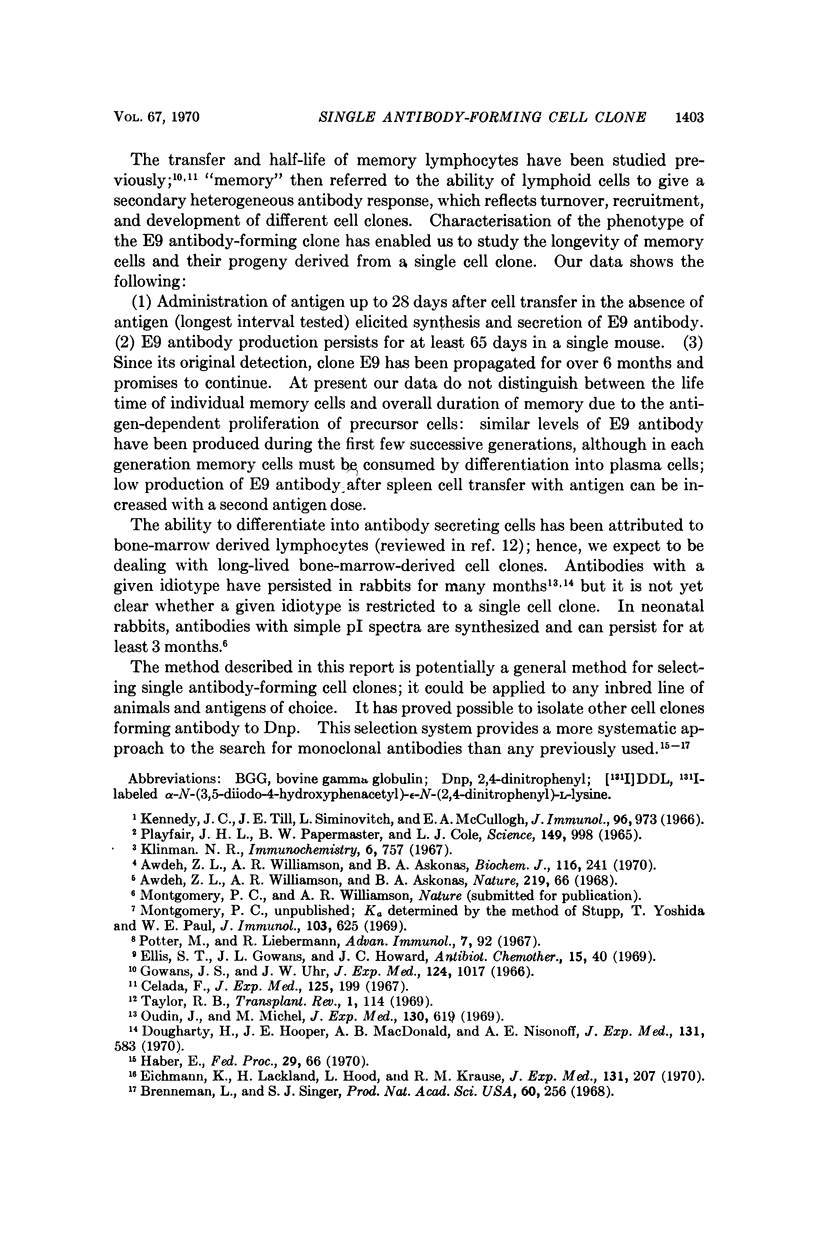
Images in this article
Selected References
These references are in PubMed. This may not be the complete list of references from this article.
- Awdeh Z. L., Williamson A. R., Askonas B. A. Isoelectric focusing in polyacrylamide gel and its application to immunoglobulins. Nature. 1968 Jul 6;219(5149):66–67. doi: 10.1038/219066a0. [DOI] [PubMed] [Google Scholar]
- Awdeh Z. L., Williamson A. R., Askonas B. A. One cell-one immunoglobulin. Origin of limited heterogeneity of myeloma proteins. Biochem J. 1970 Jan;116(2):241–248. doi: 10.1042/bj1160241. [DOI] [PMC free article] [PubMed] [Google Scholar]
- Celada F. Quantitative studies of the adoptive immunological memory in mice. II. Linear transmission of cellular memory. J Exp Med. 1967 Feb 1;125(2):199–211. doi: 10.1084/jem.125.2.199. [DOI] [PMC free article] [PubMed] [Google Scholar]
- Eichmann K., Lackland H., Hood L., Krause R. M. Induction of rabbit antibody with molecular uniformity after immunization with group C streptococci. J Exp Med. 1970 Jan 1;131(1):207–221. doi: 10.1084/jem.131.1.207. [DOI] [PMC free article] [PubMed] [Google Scholar]
- Ellis S. T., Gowans J. L., Howard J. C. The origin of antibody forming cells from lymphocytes. Antibiot Chemother. 1969;15:40–55. doi: 10.1159/000386770. [DOI] [PubMed] [Google Scholar]
- Gowans J. L., Uhr J. W. The carriage of immunological memory by small lymphocytes in the rat. J Exp Med. 1966 Nov 1;124(5):1017–1030. doi: 10.1084/jem.124.5.1017. [DOI] [PMC free article] [PubMed] [Google Scholar]
- Haber E. Antibodies of restricted heterogeneity for structural study. Fed Proc. 1970 Jan-Feb;29(1):66–71. [PubMed] [Google Scholar]
- Kennedy J. C., Till J. E., Siminovitch L., McCulloch E. A. The proliferative capacity of antigen-sensitive precursors of hemolytic plaque-forming cells. J Immunol. 1966 Jun;96(6):973–980. [PubMed] [Google Scholar]
- Klinman N. R. Antibody with homogeneous antigen binding produced by splenic foci in organ culture. Immunochemistry. 1969 Sep;6(5):757–759. doi: 10.1016/0019-2791(67)90140-1. [DOI] [PubMed] [Google Scholar]
- MacDonald A. B., Nisonoff A. Quantitative investigations of idiotypic antibodies. 3. Persistence and variations of idiotypic specificities during the course of immunization. J Exp Med. 1970 Mar 1;131(3):583–601. doi: 10.1084/jem.131.3.583. [DOI] [PMC free article] [PubMed] [Google Scholar]
- Oudin J., Michel M. Idiotypy of rabbit antibodies. II. Comparison of idiotypy of various kinds of antibodies formed in the same rabbits against Salmonella typhi. J Exp Med. 1969 Sep 1;130(3):619–642. doi: 10.1084/jem.130.3.619. [DOI] [PMC free article] [PubMed] [Google Scholar]
- Playfair J. H., Papermaster B. W., Cole L. J. Focal antibody production by transferred spleen cells in irradiated mice. Science. 1965 Aug 27;149(3687):998–1000. doi: 10.1126/science.149.3687.998. [DOI] [PubMed] [Google Scholar]
- Stupp Y., Yoshida T., Paul W. E. Determination of antibody-hapten equilibrium constants by an ammonium sulfate precipitation technique. J Immunol. 1969 Sep;103(3):625–627. [PubMed] [Google Scholar]
- Taylor R. B. Cellular cooperation in the antibody response of mice to two serum albumins: specific function of thymus cells. Transplant Rev. 1969;1:114–149. doi: 10.1111/j.1600-065x.1969.tb00138.x. [DOI] [PubMed] [Google Scholar]




